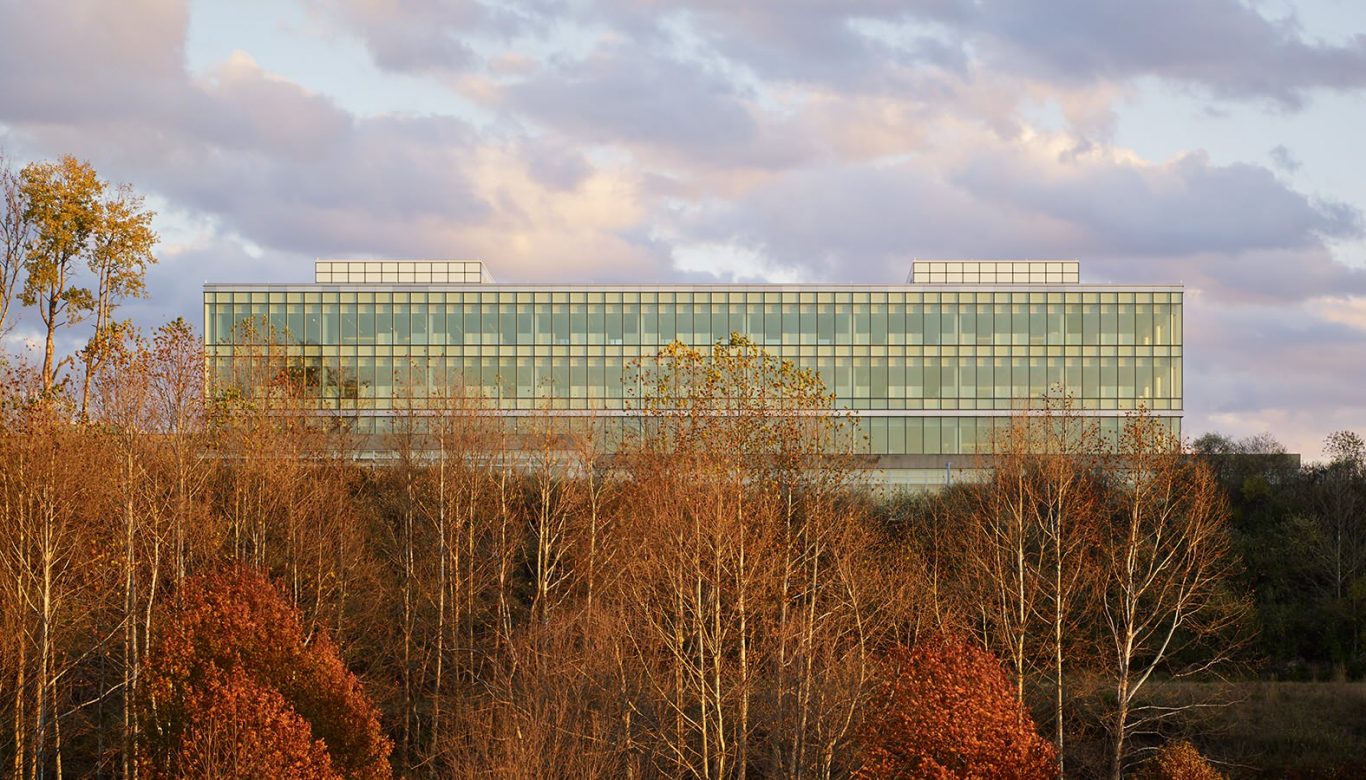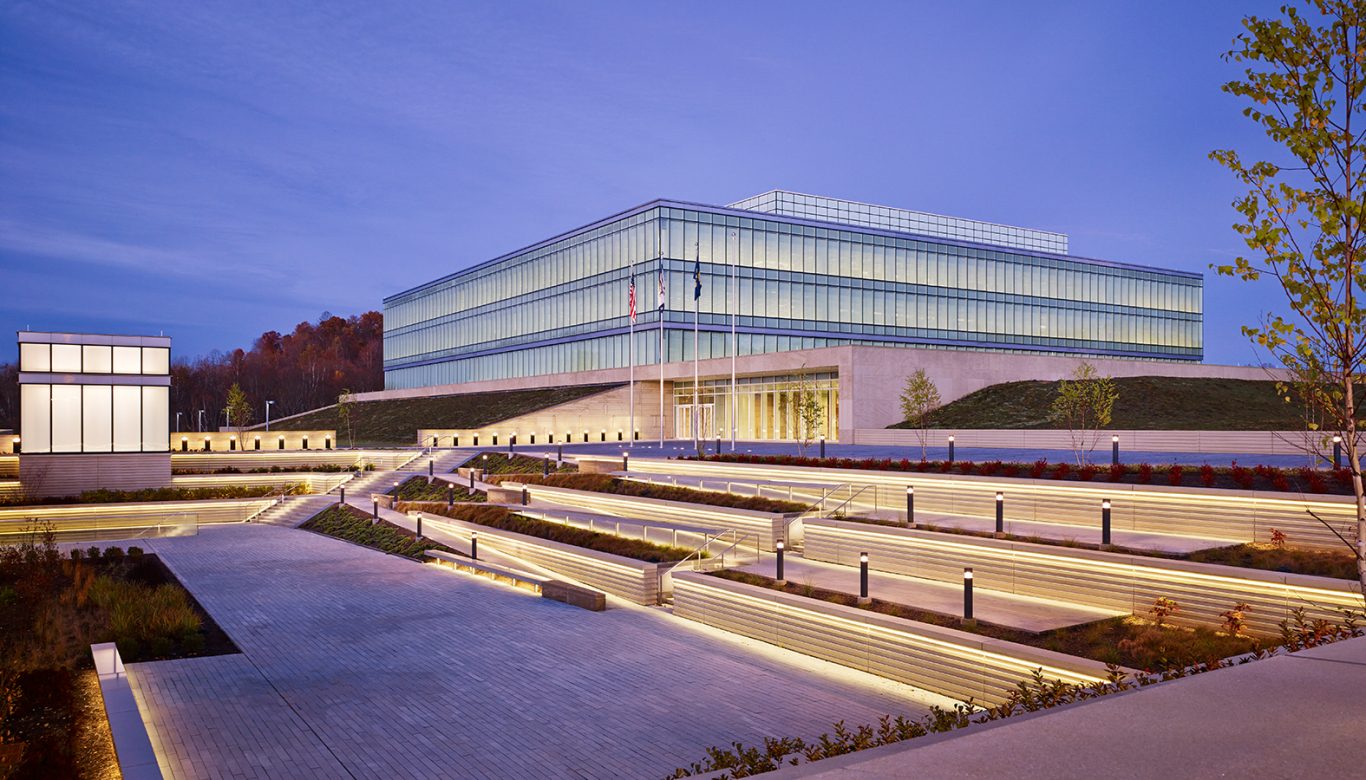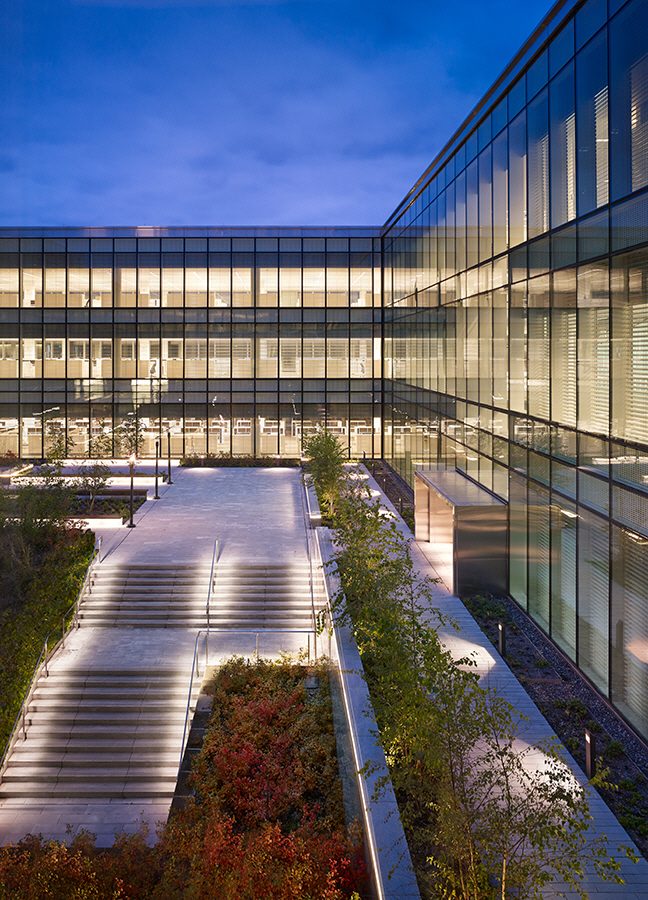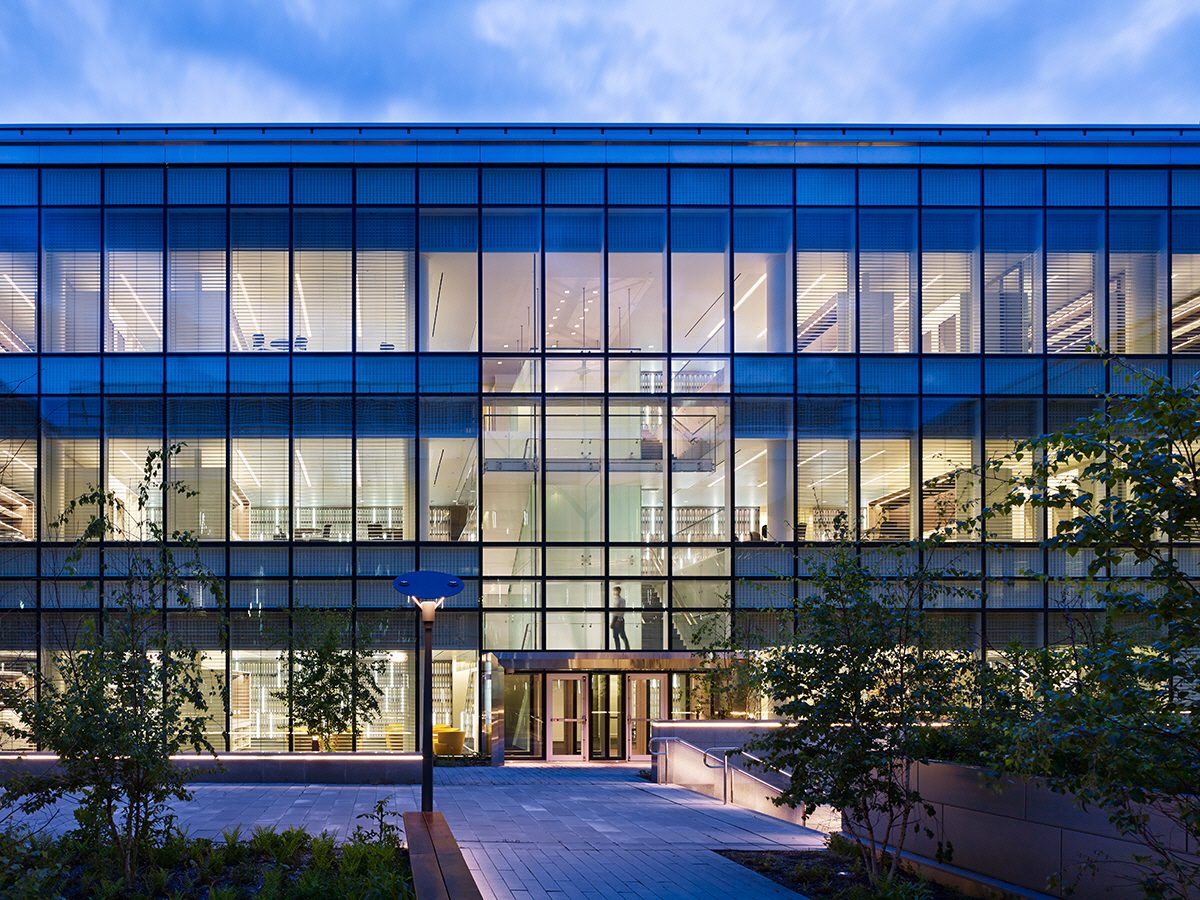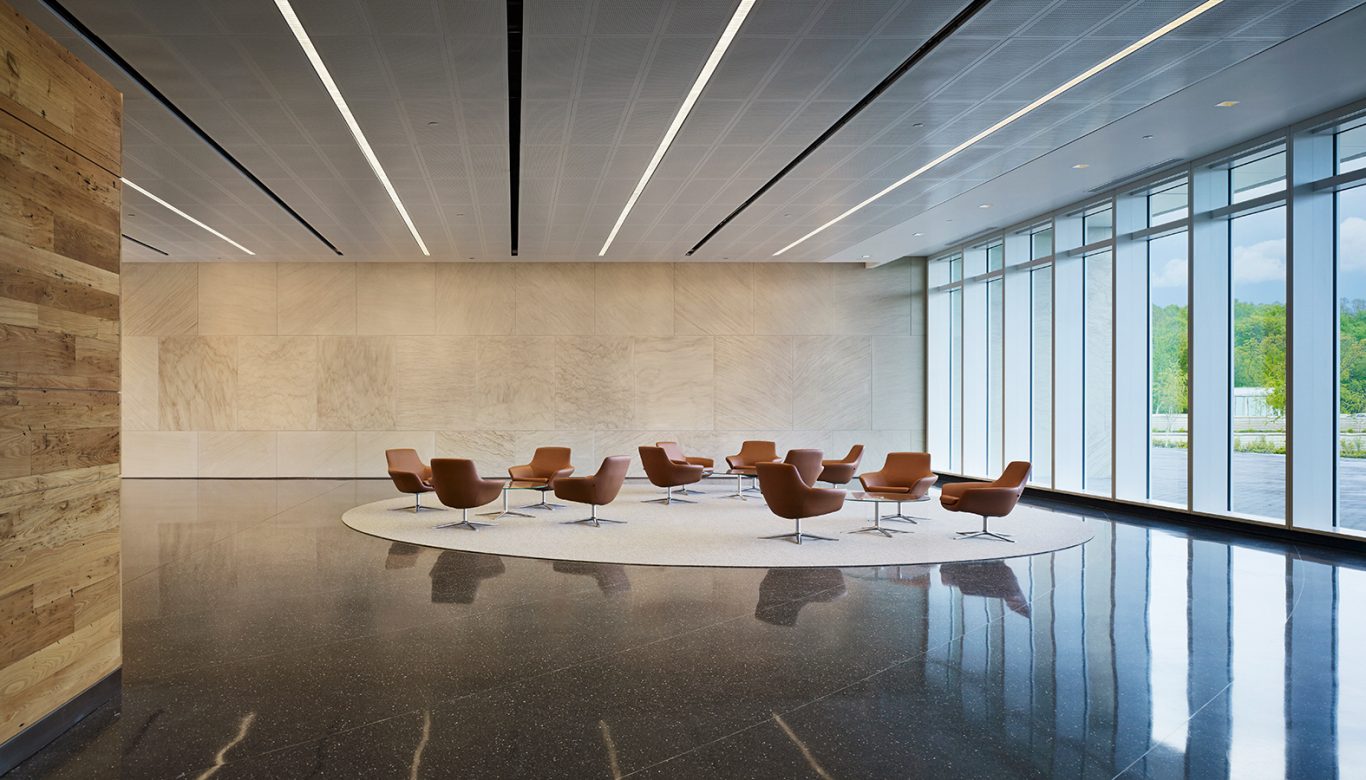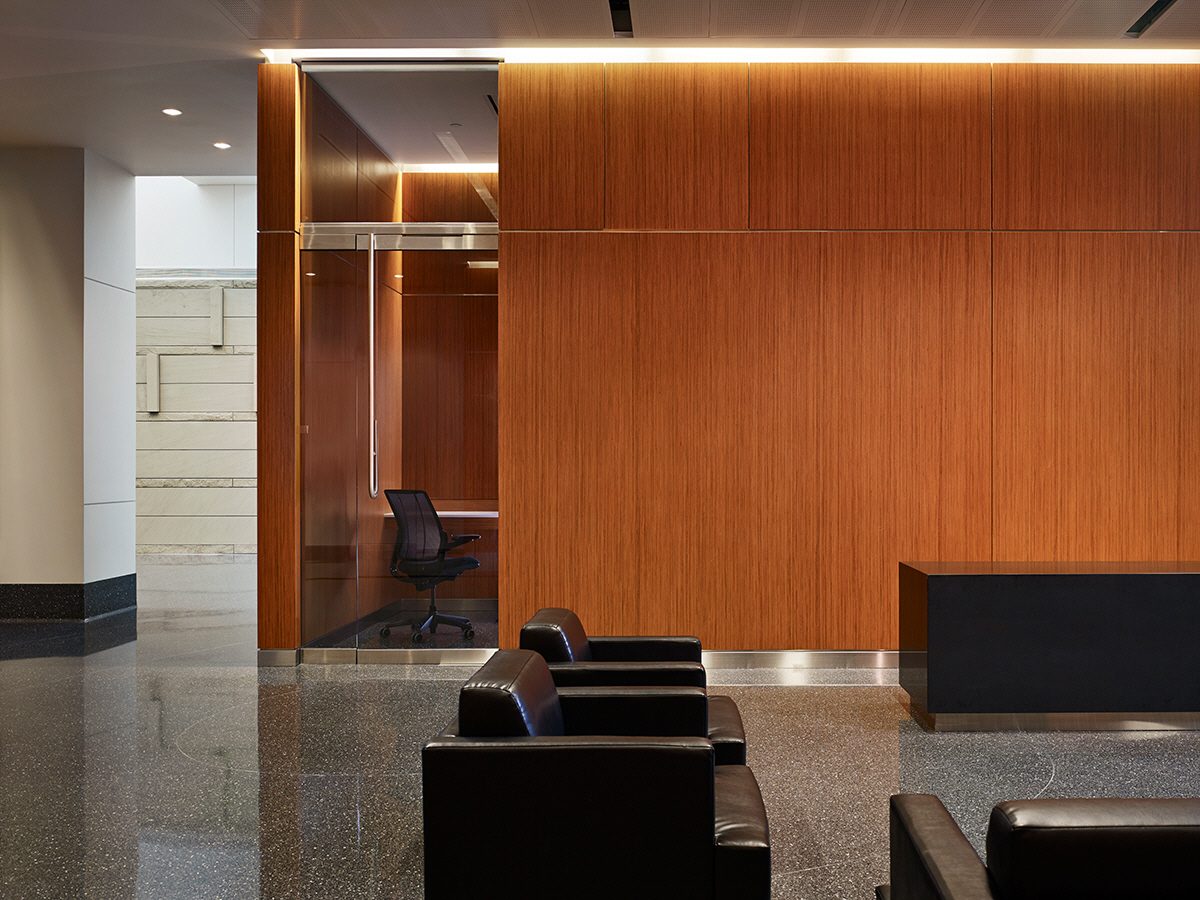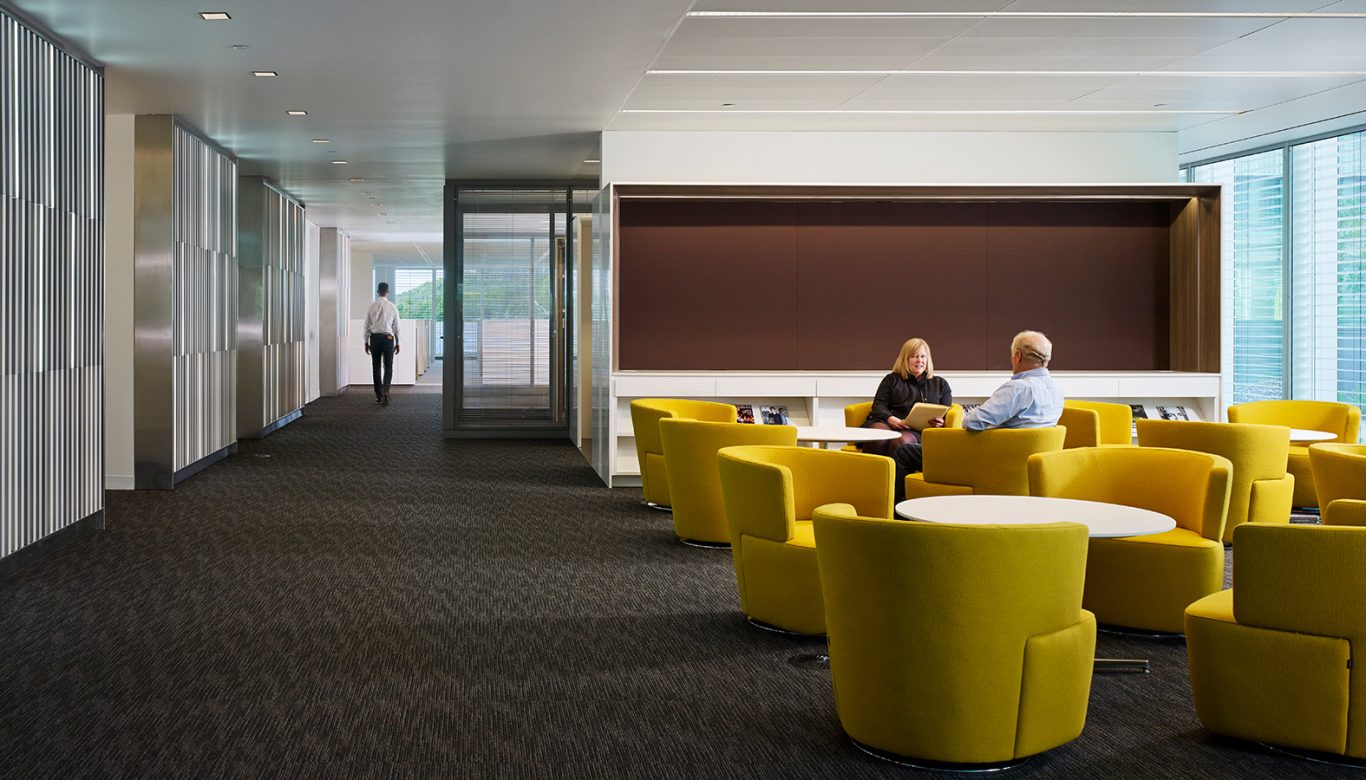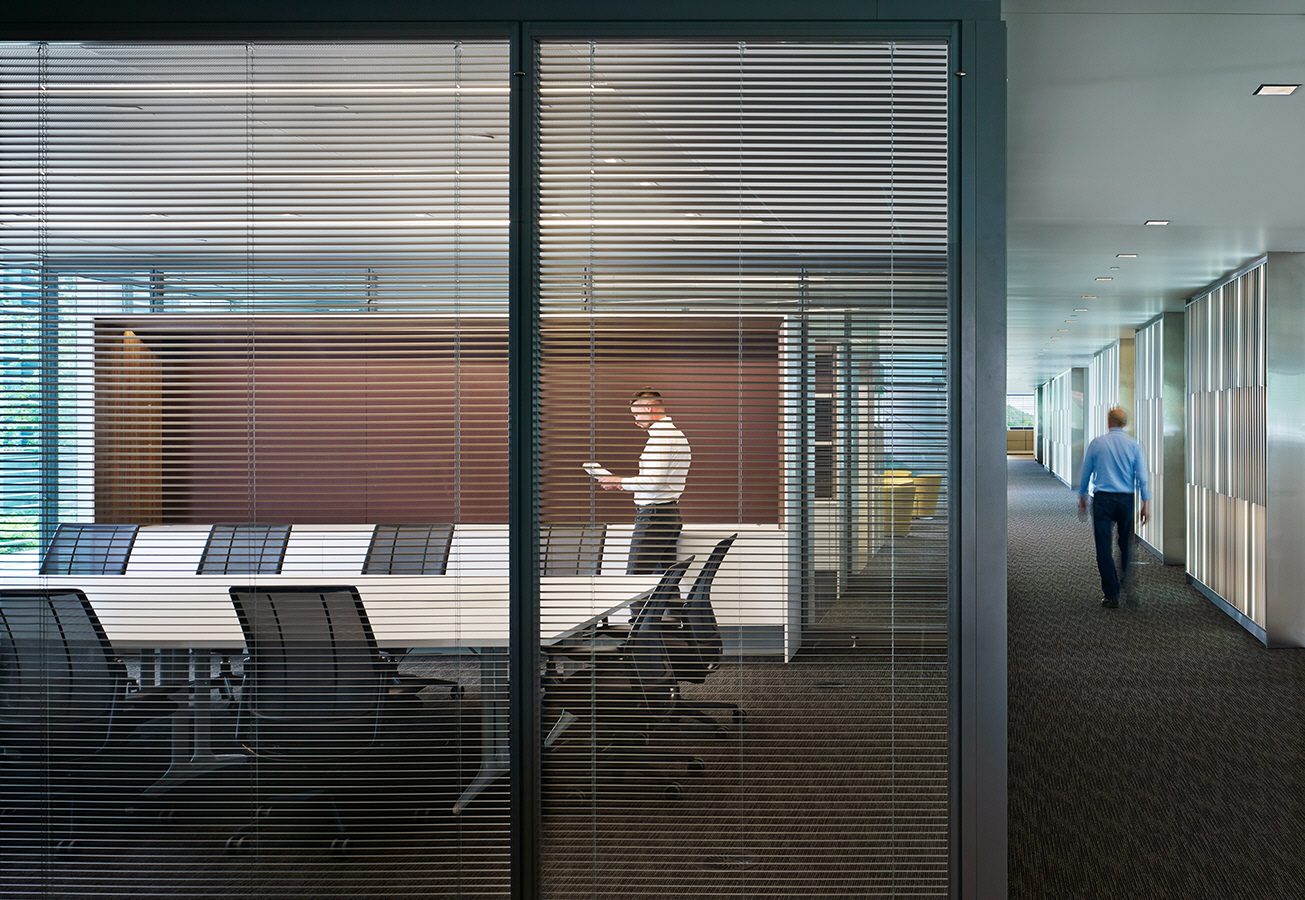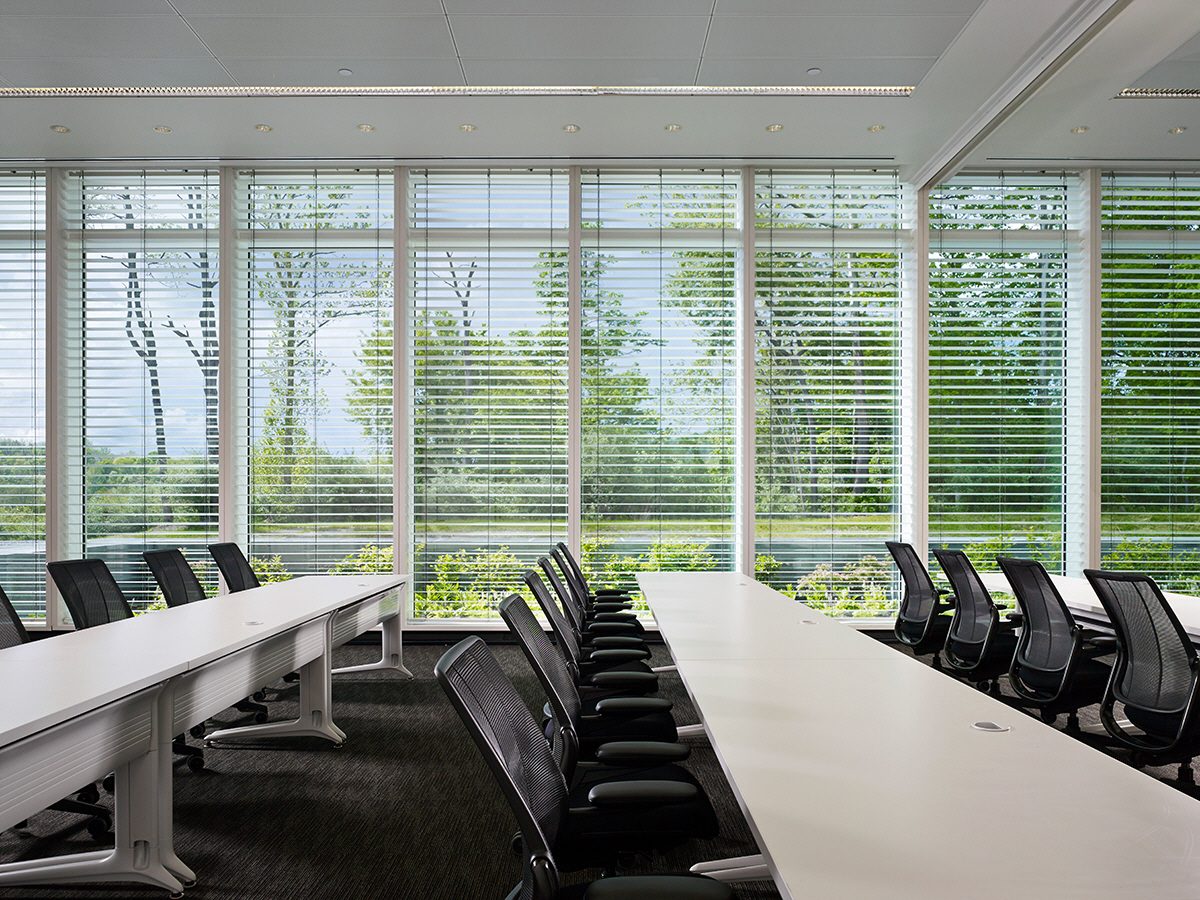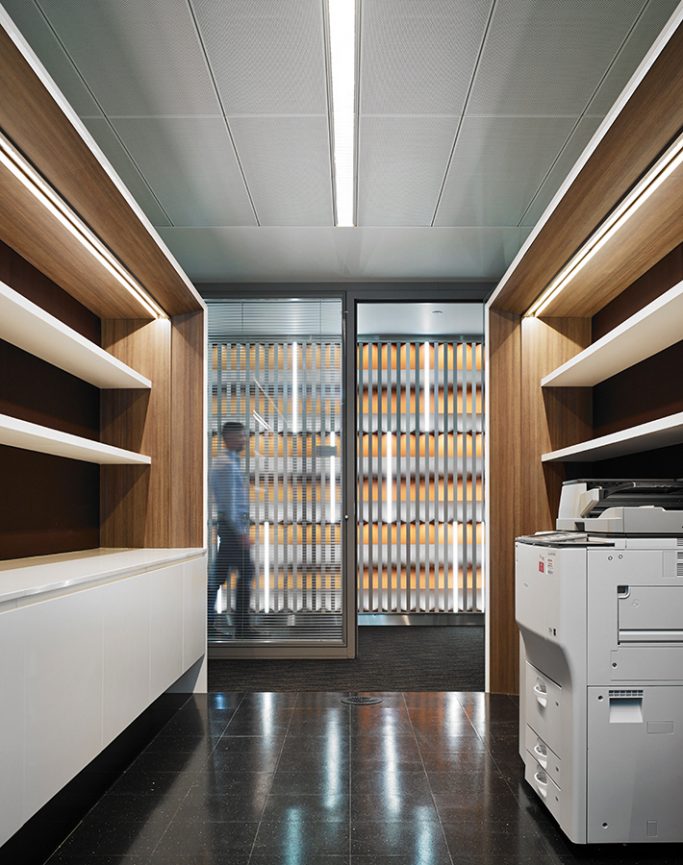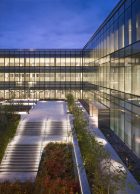This new FBI facility accommodates the future of the agency’s largest division, Criminal Justice Information Services (CJIS), by centralizing the research, development, and application of biometric identification technology. Located in Clarksburg, West Virginia, it is the product of a joint effort with the FBI and the U.S. Department of Defense (DOD). The facility allows the CJIS Division and the U.S. Department of the Army to advance the next generation of identification technologies.
SOM’s design integrates architecture, interiors, structural engineering, and sustainability to create a high performance workplace. The 375,000-square-foot building is situated on a plateau in order to minimize its environmental impact on the hilly, pastoral site. The cubic volume contains three office floors, organized around a spacious central courtyard. Offices are elevated on a podium, which contains the building entry, amenities, administrative space, a data center, and the Department of Justice fingerprint file storage facility. The podium is partially embedded in an earthen berm to provide security and thermal stability for the data center. The highly secure building meets the DOD standards for anti-terrorism force protection.
Designed to be a “future-proof” facility, the building’s modular design enables a flexible and adaptable workplace. SOM tested multiple interior planning modules, based upon newly developed furniture space standards for both agencies, with curtain wall modules, resulting in an optimized structural grid.
The facility provides an inspiring workplace for its 1,300 employees. Its exterior glass envelope with internal automated blinds brings in ample daylight and offers inspiring views of the surrounding landscape. The large interior courtyard allows workers to enjoy an outdoor amenity space without leaving the secure facility. Informal gathering areas are located on each floor, coupled with shared office support and amenities. A communicating stair encourages physical activity and links work areas across multiple floors.
The LEED® Gold-certified building achieves its sustainability goals through an integrated building system approach. Sustainable features include native plant landscaping with high efficiency irrigation; interior lighting controls; environmentally preferred products and building materials; optimum-performance building envelope and an underfloor pressurized mechanical distribution system; planted roofs; protection of existing plateau grades by means of erosion and sedimentation barriers; and parking allocated to fuel-efficient and carpool vehicles.
